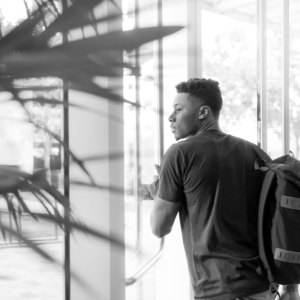Connecting & Belonging on the College Campus
According to the US Census Bureau, college graduates earn almost twice as much as those with only a high school diploma over the course of their lifetime and are significantly more likely to be employed. This means they are better able to support themselves and their families. A larger pool of college graduates also helps to strengthen the U.S. economy by increasing tax returns and consumer spending power and building a more educated workforce that can compete on a global stage.
But the reality is that not everyone finds it easy to make the most out of opportunities in higher education. According to the U.S. Department of Education, less than half of low-income high school seniors who intend to go to college end up enrolling, and just one in 12 graduate with a degree by age 24. Less than 60% of full-time students graduate from four-year colleges within six years, and less than 30% graduate from community colleges within three years.
This section of our larger portfolio of postsecondary work, detailed in the report Nudging for Success, focuses on applying behavioral science to getting to graduation on time.
Connecting on Campus
Campus life brings a mix of new academic challenges for students which can threaten on-time college completion. Students who don’t meet minimum GPA or credit completion requirements risk losing federal financial aid, and negative academic feedback can reinforce harmful self-perceptions and incorrectly send students the message that they don’t belong. Low-income students experiencing these struggles may leave college before earning a degree—in debt with no return on their investment—or turn to costlier ways to borrow the funds needed to continue.
There are many reasons for students to struggle academically that have nothing to do with their abilities. Students may underestimate the amount of study time needed to pass classes and have difficulty balancing their schoolwork with everyday obligations like work, family, and friendships. While many higher education institutions offer formal support systems like on-campus tutoring, these services are often plagued by low uptake and visibility. Some students perceive seeking help as an admission that they are not “cut out” for college, and still others seek it out too late in the semester to turn their grades around.
To increase the number of students taking advantage of useful college services and support systems, ideas42 designed solutions encouraging students to seek out tutoring, study more, and register earlier for classes to ensure they have the optimal course load and schedule. We designed these interventions not just to help students successfully follow through on these actions, but to help them feel like these behaviors were the norm among their peers. In one project, we expanded our efforts to target college faculty as well, acknowledging the important role they can play in supporting students and encouraging positive action.
By targeting specific behaviors like accessing tutoring, budgeting study time, and registering for classes, we were able to improve individual elements of the student experience and increase academic success.
Interested in learning more about our work applying behavioral science to the post-secondary education space? Reach out to us at education@ideas42.org or tweet at @ideas42 to join the conversation.









